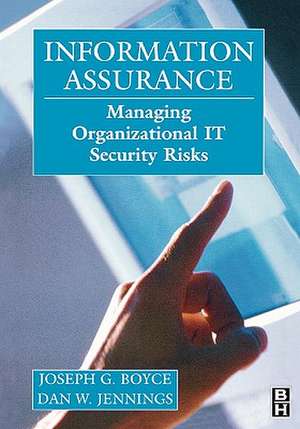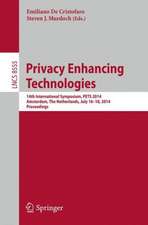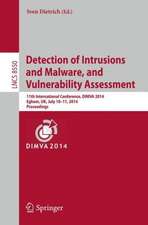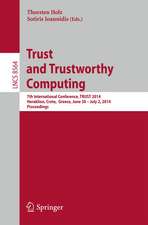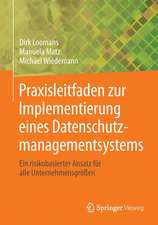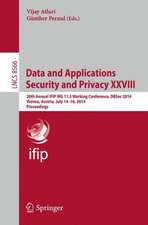Information Assurance: Managing Organizational IT Security Risks
Autor Joseph Boyce, Daniel Jenningsen Limba Engleză Paperback – 25 iun 2002
There is a growing concern among all corporations and within the security industry to come up with new approaches to measure an organization's information security risks and posture. Information Assurance explains and defines the theories and processes that will help a company protect its proprietary information including:
* The need to assess the current level of risk.
* The need to determine what can impact the risk.
* The need to determine how risk can be reduced.
The authors lay out a detailed strategy for defining information security, establishing IA goals, providing training for security awareness, and conducting airtight incident response to system compromise. Such topics as defense in depth, configuration management, IA legal issues, and the importance of establishing an IT baseline are covered in-depth from an organizational and managerial decision-making perspective.
- Experience-based theory provided in a logical and comprehensive manner.
- Management focused coverage includes establishing an IT security posture, implementing organizational awareness and training, and understanding the dynamics of new technologies.
- Numerous real-world examples provide a baseline for assessment and comparison.
Preț: 546.65 lei
Preț vechi: 683.32 lei
-20% Nou
Puncte Express: 820
Preț estimativ în valută:
104.60€ • 109.21$ • 86.57£
104.60€ • 109.21$ • 86.57£
Carte tipărită la comandă
Livrare economică 05-19 aprilie
Preluare comenzi: 021 569.72.76
Specificații
ISBN-13: 9780750673273
ISBN-10: 0750673273
Pagini: 288
Ilustrații: 1
Dimensiuni: 178 x 254 x 14 mm
Greutate: 0.49 kg
Editura: ELSEVIER SCIENCE
ISBN-10: 0750673273
Pagini: 288
Ilustrații: 1
Dimensiuni: 178 x 254 x 14 mm
Greutate: 0.49 kg
Editura: ELSEVIER SCIENCE
Public țintă
Security Managers, INFOSEC Managers, Operational Managers, Information and Operational System Auditors, IT System Administrators and IT Network Managers.Cuprins
Section I - The Organizational IA Program: The Practical and Conceptual Foundation
Ch. 1 IA and the Organization: The Challenges
Ch. 2 Basic Security Concepts, Principles, and Strategy
Section II - Defining the Organization's Current IA Posture
Ch. 3 Determining the Organization's IA Baseline
Ch. 4 Determining IT Security Priorities
Ch. 5 The Organization's IA Posture
III - Establishing and Managing an IA Defense In Depth Strategy within an Organization
Ch. 6 Layer 1: IA Policies
Ch. 7 Layer 2: IA Management
Ch. 8 Layer 3: IA Architecture
Ch. 9 Layer 4: Operational Security Administration;
Ch. 10 Layer 5: Configuration Management
Ch. 11 Layer 6: Life-Cycle Security
Ch. 12 Layer 7: Contingency Planning
Ch. 13 Layer 8: IA Education, Training, and Awareness
Ch. 14 Layer 9: IA Policy Compliance Oversight
Ch. 15 Layer 10: IA Incident Response
Ch. 16 Layer 11: IA Reporting
Appendix
Ch. 1 IA and the Organization: The Challenges
Ch. 2 Basic Security Concepts, Principles, and Strategy
Section II - Defining the Organization's Current IA Posture
Ch. 3 Determining the Organization's IA Baseline
Ch. 4 Determining IT Security Priorities
Ch. 5 The Organization's IA Posture
III - Establishing and Managing an IA Defense In Depth Strategy within an Organization
Ch. 6 Layer 1: IA Policies
Ch. 7 Layer 2: IA Management
Ch. 8 Layer 3: IA Architecture
Ch. 9 Layer 4: Operational Security Administration;
Ch. 10 Layer 5: Configuration Management
Ch. 11 Layer 6: Life-Cycle Security
Ch. 12 Layer 7: Contingency Planning
Ch. 13 Layer 8: IA Education, Training, and Awareness
Ch. 14 Layer 9: IA Policy Compliance Oversight
Ch. 15 Layer 10: IA Incident Response
Ch. 16 Layer 11: IA Reporting
Appendix
Recenzii
Information security experts with the Department of Defense, authors Joseph Boyce and Dan Jennings outline the steps needed to develop an information assurance plan to protect an organization’ knowledge and information. Though the authors’ backgrounds are in government, the book is as applicable to protecting the proprietary corporate information as it is to safeguarding classified government data. Perhaps the best resource in the book is the wealth of references cited, leading the reader to a trove of additional information. It is a high-level overview of the necessary elements of an effective information-assurance plan and strategy, written in such a way that it can be used to explain the fundamentals to management. – Security Management
